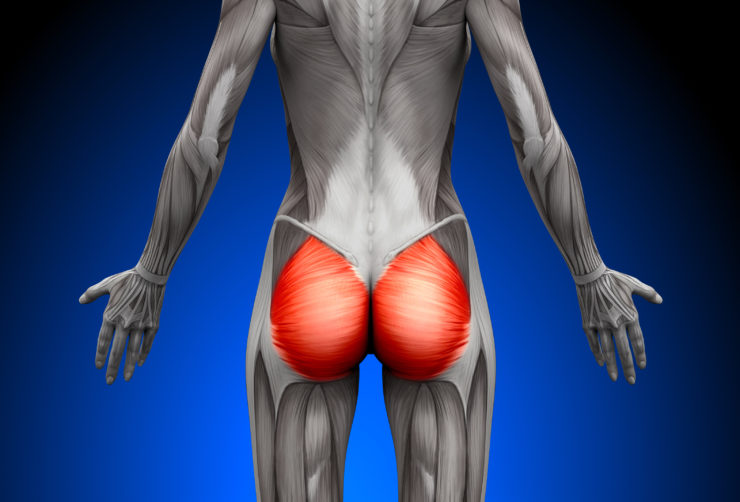ATC 270: Weak Glutes, Marathon to 800m, Why You Can’t Raise Your Heart Rate, and more!
September 28, 2018Sponsor:
 This episode is brought to you by Generation UCAN Superstarch, the incredible fuel of choice for endurance athletes and health enthusiasts looking for burn more fat for fuel, optimize sports performance and keep blood sugar in check. EP fans get 15% of UCAN, shop now. You can also use the code “enduranceplanet” if you’re shopping at generationucan.com for that 15% discount. Join the revolution. You can burn more fat for fuel. Oh, and be sure to check out the UCAN bars with peach and also another flavor with coffee beans for an added kick!
This episode is brought to you by Generation UCAN Superstarch, the incredible fuel of choice for endurance athletes and health enthusiasts looking for burn more fat for fuel, optimize sports performance and keep blood sugar in check. EP fans get 15% of UCAN, shop now. You can also use the code “enduranceplanet” if you’re shopping at generationucan.com for that 15% discount. Join the revolution. You can burn more fat for fuel. Oh, and be sure to check out the UCAN bars with peach and also another flavor with coffee beans for an added kick!
Sponsor:
 Inside Tracker is an awesome service to use for convenient and informative blood testing geared toward athletes. You can get up to 30 biomarkers tested and more on your journey to bettering performance. Use code “enduranceplanet” for a 10% discount.
Inside Tracker is an awesome service to use for convenient and informative blood testing geared toward athletes. You can get up to 30 biomarkers tested and more on your journey to bettering performance. Use code “enduranceplanet” for a 10% discount.
In this episode of Ask the Coaches, Brock Armstrong and Lucho answer these listener questions and talk about:
- Lucho’s 400m race and the concept of “special (specific) endurance”
- Brock’s 10k and plans for a Half Marathon
- Kipchoge’s 2:01:39 Marathon World Record in Berlin!
- Vittoria Bussi and the world one-hour cycling record… using a ketone drink.
Jessica asks:
I have a question about my long runs and increasing their distance. I’m a 24-year-old female and I’ve been running for about 9 years focusing primarily on the half-marathon. I have been doing triathlon my whole life, and am planning on my first full IM in Sept 2019. I PRd my 70.3 this July, but kind of blew up on the run, but have maintained my run fitness and am planning on doing a 21.1 in October.
I’ve never done over-distance training for any of my previous halfs or 70.3s, but am thinking that might help improve my run fitness. However, I’m finding that nearing the end, or just after finishing my long runs my glutes (near the sides by my hips) are quite sore, and I wonder if this will be a limiting factor as I try to increase my run distance. I’m assuming this is a weakness in my glutes (my knees collapse in on heavy squats and when I run I find dirt marks on my lower calves from kicking myself). I already strength train and incorporate exercises attempting to address this issue, but after about a year of trying to improve this, I’m not noticing much difference. At the gym, I do adductor and abductor stuff with the cables (attached to my ankle, not sure what to call this), and use a band to walk sideways and do fire hydrants and clam shells etc as well as RDLs and lunges.
Any thoughts on what else I should be doing? Or how often I should be doing it? (Currently doing strength 2x/week). I’m not sure if this is actually slowing me down, but I am concerned about how it might impact me when I try to train for the Ironman next year.
The coaches say:
- Regarding what you’re already doing: Try attaching cord to forefoot on abductors and adductor exercises. Also, “monster walks” and fire hydrants are activators not strengtheners unless you do them isometrically to failure or with added weight.
- Consider adding back plank (that’s an isometric thing) or donkey kicks (a machine at the gym) for glute strength.
- Be careful of not doing glute exercises too close to long runs. Two days out is best.
- But, at the end of the day, the coaches are not convinced this is a glute issue.
- Could be piriformis or glute med.
- Other strength exercises to consider: lateral lunges, deadlifts bulgarian split squats (the best!)
- Could be an alignment or mobility issue, not just strength.
- Brock guesses that because of calf dirt marks you need to get your feet more parallel. Run like you’re on a tightrope, one foot in front of the other (this increases efficiency and might help resolve a run mechanics issue). Pay attention to alignment. Use kicks as a reminder to focus on stride.
- Most likely, you’re just adjusting to distance. Everyone has niggles at the end of a long run. As long as you’re making sure to recover after long runs it shouldn’t be a problem. It’ll take longer and longer to feel that pain as you adapt to longer and longer distances.
- Stop doing heavy squats if knees are collapsing! There’s a debate on whether or not you need them, and Lucho says nay. Studies have shown it increases efficiency in running but it’s not the only way! Form and skill is very important if you choose to keep doing them. Replace with leg press 3/4 squats, deadlifts, or Bulgarian split squats (What Lucho likes to do for these is get into position and hold dumbbells to failure. Or, when you come out of squat, make sure you’re pulling with hamstring not pushing up)
- Throw in hip hikes before and after the run.
- Consider doing mobility in the middle of a long run if necessary.
- Don’t push through pain that causes you to alter your mechanics.
R McGinness asks:
I will keep this brief but let Lucho Run wild with talking track.
I am a super slow-twitch athlete pretty fast… 73:15 half marathon, 25:30 8k. I have never trained for sprinting but have not broken 60 for a 400 since age 14 in 8th grade when my primary sport was wrestling, and I was not a long distance endurance slow twitcher.
I want to shake things up and try to ultimately break 2 minutes a year from now.
How would you phase a year training cycle to go from being in ~2:35 marathon fitness unable to run a 200 under 30 seconds to a sub 2 minute 800 runner? Imagine I am willing to dedicate myself to the goal as though I were… say, trying to qualify for Kona.
The coaches say:
- Age matters here!
- This is harder than you think.
- One training period for 200-400, one for mile, one for 800.
- Plan on some short but steep hills (100% effort), flies (all out), 50-60s.
- Kosmin test – check it out.
James asks:
I have a question that I am running into as it relates to the 80/20 for Zone 2 vs Zone 5 training. I am a 42-year-old male. I am primarily a runner with a past triathlon background (so I do have a lot of familiarity with power, lactate threshold, etc) with a current focus on ultrarunning trail and mountain races. I see myself as a decent back of the “front-pack”/front of the “mid-pack” runner in most distances (top 5-10% of field when I don’t blow up). 2017 Leadville 100 run finisher (not top 5-10% : )), 4x 50 mile finisher, numerous trail/mountain 25/50k/100ks, half-marathons, etc. From a pace standpoint, I run 5ks in low 6’s and 10-miler/half marathons in high 6’s/7.
My question is: My MAF zone 2 by the MAF calc in addition to a recent VO2 max test, is in the 140s (145 MAF, 143-152 VO2 test to be exact, zone 5 is 183+). When I train (and I have focused on the actual HR Zones more the last few months versus just perceived exertion) my low effort endurance heart rate seems to be consistently below my zone 2 (120s, low 130s). And when I try to hit the zone 2 range on the bike (indoor trainer) or run, for example, my legs/body tire way before my heart rate elevates to Zone 2 range. I have been trying to have endurance rides/runs (90 mins) in zone 2 and my legs can’t make it. It feels high effort. I always perceived zone 2 as a low HR longer duration effort with limited exertion hitting the duration.
From a zone 5 perspective, I can’t even get close to 180 on my HR during intervals and barely touch the 170s. Is this good/bad sign of fitness and conditioning? Are my legs undertrained versus cardio? Am I working out too easy when I try to execute the low effort days? Do I need to build up my base up so my muscles are conditioned better? I am not a large guy (155lbs, 5’11”) so I don’t have the muscle capacity of larger bikers/runners. Plus, my training for ultrarunning races are consistently 3-5 hours on long days so I really focus on perceived effort with a goal of completing the workout.
Curious your thoughts as I’m always trying to progress my performance for endurance races.
The coaches say:
- How do you feel otherwise? This could be overtraining and/or adrenal fatigue.
- Heart rate is always lower on a bike due to not having to support and propel your entire body weight.
- Try an FTP on the bike and see where that falls?
- Perhaps too much time in that low zone.
- Try interval training pushing into your true zone 2 heart rate then backing down to your comfortable pace. This can help you get more comfortable at the higher heart rate if you’ve been primarily training lower.

Add your thoughts